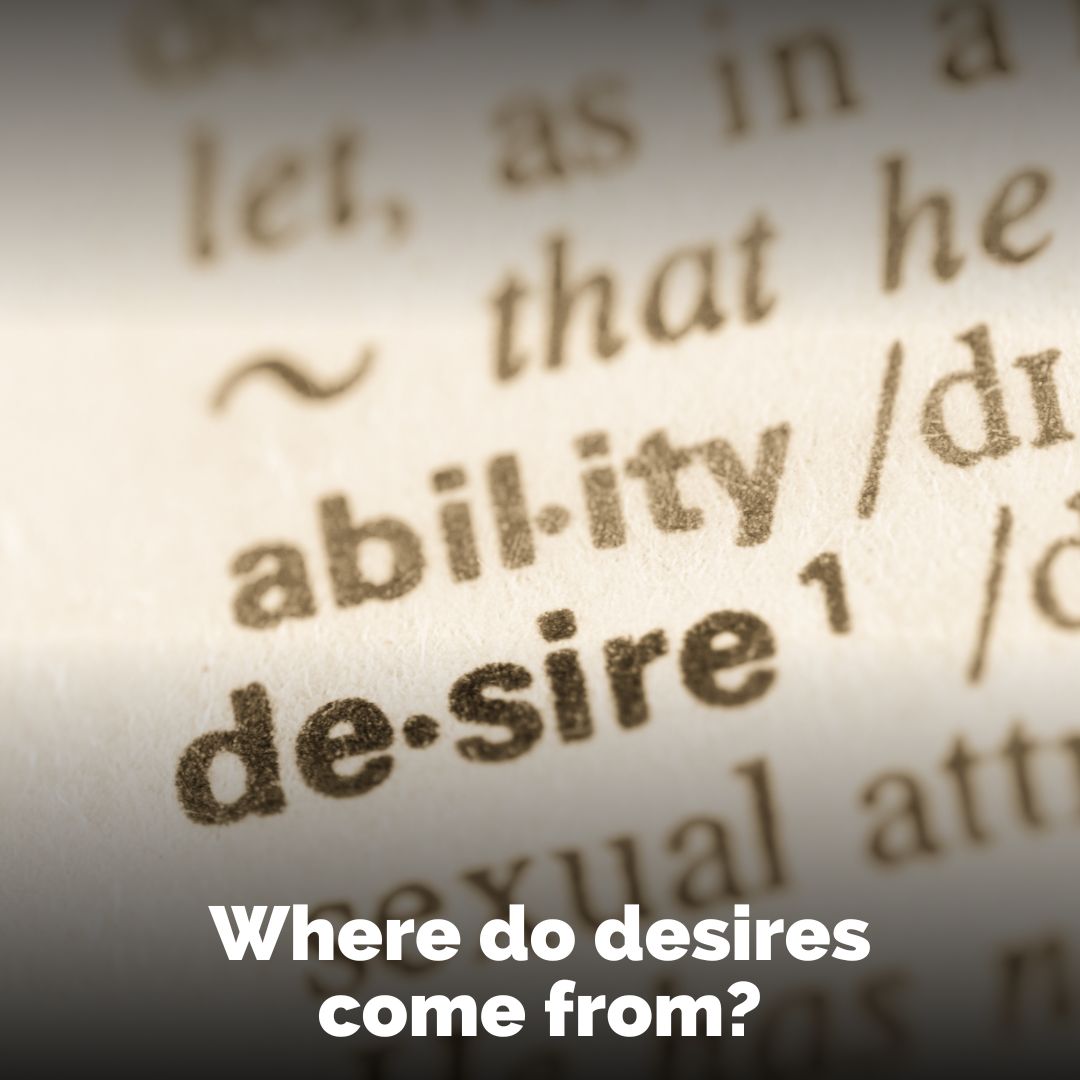Where do desires come from?
We have a subconscious mind. The Yoga-sūtras are the psychology of yoga that describes the mind; called the Chitta. Our subtle body, or subtle material body, is made up of mind, intellect, and ego (called ahaṅkāra). Three things, three elements.
If you imagine one big circle, like the Chitta, there’s a smaller circle: the ego or the ahaṅkāra. That big circle contains all the impressions we’ve taken in from this life and many lifetimes. In the small circle, the ego is our conception of who we are in this life.
The Bhagavad-gītā says, we’re taking many lives; passing from one gross material body to the next, and bringing our subconscious mind with us.
The subconscious mind is a repository of everything we touch, see, and smell; everything is being recorded and stored by the subconscious mind.
How does the mind get imprinted with desires?
When you walk in wet sand and look back, you’ll see impressions of your feet in the sand. Similarly, we leave imprints in our minds.
You’ll notice this experience if you go to an event, say an intense concert. Everybody is in a hyper state because their favorite musician is there, the music’s really loud, and the people are exuberant.
Then the next day, you’ll feel a particular vibration when you wake up. There’s an impression in every cell in your body, vibrating in a specific way, that gets recorded in your mind.
You’ll remember what happened, the smells, the people you met, the feeling you had when you were there, and your favorite song. They pulled out a lighter and waved it back and forth, and this feeling of unity was recorded in your subconscious minds.
These are like impressions on the wet sand.
How do our previous lives affect desires?
In your previous life, say you were bitten by a dog. Let’s say in this life, you see a dog, and you have the sense like, “I’ll walk a few steps to the side here, even if it’s a friendly dog.” Still, you have that samskara, that impression.
You could have been in love with somebody in your previous life that had, let’s say, a big nose and black hair, and you see someone in this life with a big nose and black hair, and you think, “Oh, I kind of like the way that person looks.”
Why do I desire some things and averse to other things?
We have what’s called rāga-dveṣa within the mind. Rāga means natural attachments, and dveṣa means a natural aversion. We’re naturally averse to certain circumstances, people, things, tastes, and smells in this world. We’re naturally attached to other things, because of our previous experiences.
These things are mentioned in modern Western psychology, but what they are may be disputed. However, there’s a much broader vision in the wisdom literature about where these impressions come from. Even babies have predispositions to certain kinds of things. They have specific likes and dislikes, and even when a baby’s born, there’s brain activity going on as if they weren’t a completely blank slate.
Suppose you consider very objectively what a human goes through in one lifetime. In that case, they spend 24 hours a day going after the things they are naturally attracted to – “I want this, I need to have it” – and probably a higher percentage of the time are avoiding things they don’t want to come in contact with.
These desires are echoes of past experiences.
It’s like a repeat of an emotion of a scene because it’s there in your mind. As commonly said, we don’t see the world the way it is; we see the world the way we are. And the way we are is affected by the context of our own minds.
Please drop me a note with your realizations or if you have any questions/comments using Ask Vaish form. I would really like to hear from you.
1
